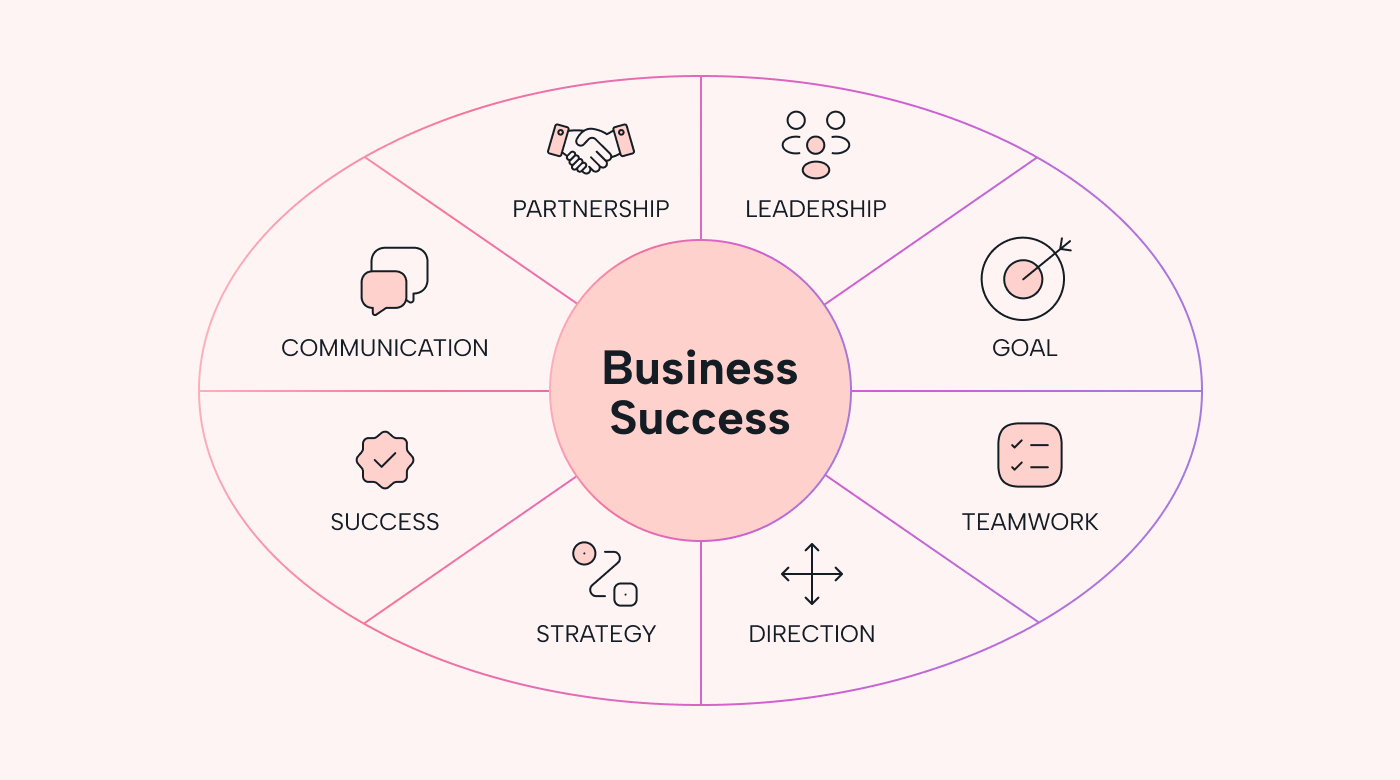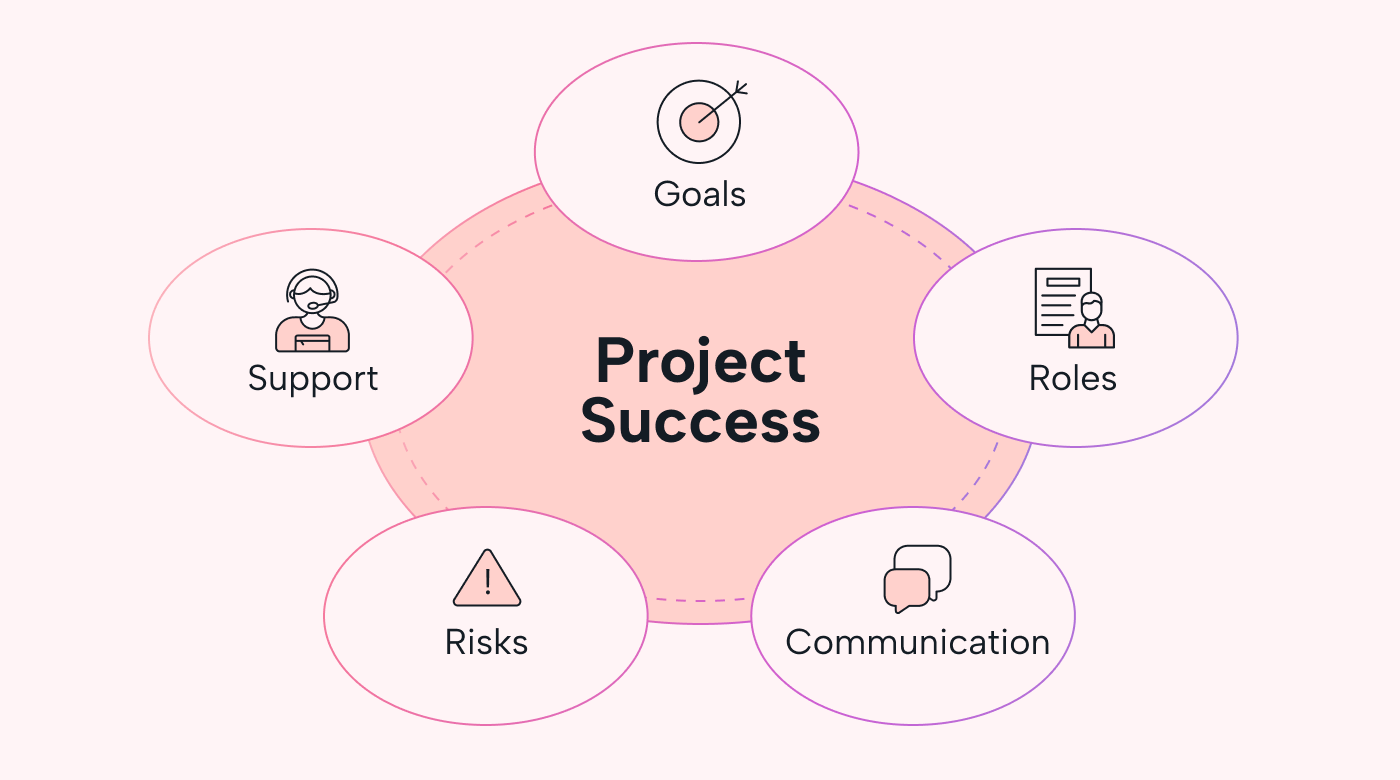Whether running a business or managing a project, one operational principle is guaranteed to keep you on the road to meeting your objectives. It’s the idea of critical success factors, the conditions you must accomplish for your overall strategy to succeed.
Consider this scenario. You decide that a strategic goal for your business is to increase your market share. Your first step is to figure out how you’d know when you’ve been successful. That, right there, is your critical success factor.
While that may sound simple, it’s a little more complicated because it depends on the critical success factors you select and how you’ll measure them with key performance indicators. You could also have anything from five to 12 critical success factors for different parts of your business or project.
Origins of the idea
Critical success factors were first described in Harvard Business Review in 1961 by D. Ronald Daniel. In his article, Management Information Crisis, he cited examples of corporations that had extensive information, very little of which was helpful to managers in doing their jobs.
Daniel turned to critical success factors to extract the information needed to support managerial activities. He wrote:
“…a company’s information system must be discriminating and selective. It should focus on ‘success factors.’ In most industries there are usually three to six factors that determine success; these key jobs must be done exceedingly well for a company to be successful.”
Benefits of critical success factors
Today, identifying critical success factors is a proven management technique. It plays a crucial role in your business or project's success by helping you plan, implement, and review your strategy.
By pinpointing your critical success factors, you can ensure that your strategic plan is aligned with your business model and environmental factors. This is vital because it helps you maintain a competitive edge in your markets, align your strategic goals with the business model, and focus your resources and efforts in your most critical areas.
Once you’ve identified your critical success factors, you can monitor and measure your progress against each factor. Regular review and analysis offers insights into the performance of your business or project and highlights areas where you can make improvements.
 |
In this way, critical success factors help you to adapt and improve your business or project over time, enhancing your prospects for long-term success.
Critical success factors in business
Businesses are all different, and depending on business size, industry, and revenue model, there can be any number of critical success factors in yours. For easier management, you can group them into four broad categories: industry-related, strategic, temporal, or environmental.
Examples of each group may be quite helpful to you:
- Industry-related: regulatory changes, responding to industry trends, etc.
- Strategic: product development, brand positioning, marketing, etc.
- Temporal: resource shortages, skills development, business model changes, etc.
- Environmental: economic downturns, market shifts, global influences, etc.
Almost anything could be a critical success factor for your business. Fortunately, there’s a well-worn three-phase approach for identifying them and understanding how to approach them.
Establish your goals and objectives
The first step is to understand exactly what you want to achieve. To do this, you need to identify key stakeholders, evaluate your current operations, and assess the resources and capabilities that are available to you.
This requires open and honest communication with all your stakeholders, including employees, customers, and managers. It’s critical that you take the feedback you receive seriously. It’ll help you to identify your goals and objectives and to put plans into action to achieve them.
Determine your critical success factors
Once you’ve identified where you want to go and figured out how to get there, it’s time to look at things that can help or hinder your ability to achieve those goals and objectives. These are your critical success factors.
For example, you may have set a goal to be the leading supplier of your category of products or services in your town or city. An objective might be to capture 50% market share. Some of your critical success factors might be:
- The funding and skills to create a great marketing campaign.
- The capacity to supply enough products or services to capture a 50% share.
- The resources to continue servicing that market once captured.
These critical success factors are quite broad and have many components. For instance, in the marketing space, you might need to employ more or different people or retain the services of an external agency. You may need to secure additional funding to finance your aggressive business strategy.
Implement your critical success factors
Now, it’s time for you to develop an action plan for each critical success factor you have identified. Going back to our example, let’s say you’ve decided to keep marketing in-house, but this means you must build capacity in your team. You have only two choices: add people or add skills.
Once you’ve done that, you’ll need to monitor progress in implementing this critical success factor and respond to any issues that might come up. There are tools you can use for this part of the process, including:
- Financial targets and performance indicators
- Quality and customer satisfaction measures
- Market share and brand reputation metrics
- Innovation and growth targets
- Risk management strategies
 |
Critical success factors on projects
The process is different with projects because the critical success factors are generally identified and documented at the start of a project. The project type is a factor, but interestingly, whatever the project, there’ll usually be only five critical success factors.
Writing for North Carolina State University, Sonja Hughes identifies these as:
- Agree on project goals
- Develop clearly defined plans with assigned responsibilities and accountabilities
- Manage the project scope effectively
- Cultivate constant, effective communications
- Make sure you have management support.
Clear project goals
Running a project is a bit like taking a road trip. You know what you want to see and where you must go to see it, and you have a good idea of how you will get there. But, simultaneously, you must remain open to exploring other opportunities along the way that may add even more value to your trip.
For example, let’s say your project implements a new ERP system for your business. The improvements you expect to see in your processes because of the new system will drive your goals and objectives.
One of the improvements may be a streamlined and more automated order fulfillment process. You’d want to measure the time it takes for this to happen in the current system and set a target for what you want from the new system.
Roles and responsibilities
Having identified what you need to do, you must now determine the best person or team to make it happen — working with external service providers if necessary. You’ll understand why this is a critical success factor, but you might not know how to go about it.
A tried-and-tested mechanism called the RACI matrix makes it easy for you to be sure that you have the right people doing the right jobs on your project. It also offers an easy way to document roles and responsibilities and to handle the complexities of managing multidisciplinary project teams.
Effective communication
Projects have many stakeholders. These range from project sponsor(s) to subject matter specialists, and all have valuable contributions to make. Ensuring that the timing of those contributions doesn’t disrupt project progress comes down to effective communication, which is why this is a critical success factor.
Among project managers, there is a catchy little phrase that’s like a red flag to a bull: “Can’t you just…”.
It usually comes up when a subject matter expert sees something she didn’t think of or know about in the project planning stages and wants to add something to the project while it’s ongoing.
It can be something small with little impact on the project, in which case it’s relatively simple to say yes and move on. Or it could create a lot of extra work that’s not in the project budget.
That’s scope creep, and it can only be avoided with clear and pointed communication:
- No, we can’t add that because…
- Yes, we can add that, but this will be the project impact...
 |
Risk management
Former US Secretary of State Donald Rumsfeld is famous for saying:
“There are known knowns. These are things we know that we know. There are known unknowns. That is to say, there are things that we know we don't know. But there are also unknown unknowns. There are things we don't know we don't know.”
The same applies to risks on the project. There are things you can anticipate, and then the curve balls. This makes risk management an important critical success factor, but one you can handle with the right tools.
Project sponsor support
On most projects, the project sponsor controls the purse strings. It follows that losing that support could imperil the project, which is why this is also a critical success factor. It’s also why effective and timely communication on progress, financial goals, performance indicators, and risks is crucial for successful project outcomes.
Managing your critical success factors
If you take anything from this article, it should be that critical success factors can be the difference between succeeding and failing in your business or on your project. You need to be aware of them, monitor them, and proactively take the appropriate steps if (or when) problems seem to be around the corner.
The key word here is proactively. It’s often too late to address a problem once it has already come to a head. You can attach your list of critical success factors to Motion’s AI-powered calendar. Your whole team can monitor them and schedule meetings when they think a problem is imminent or when you just want to assess your progress.





